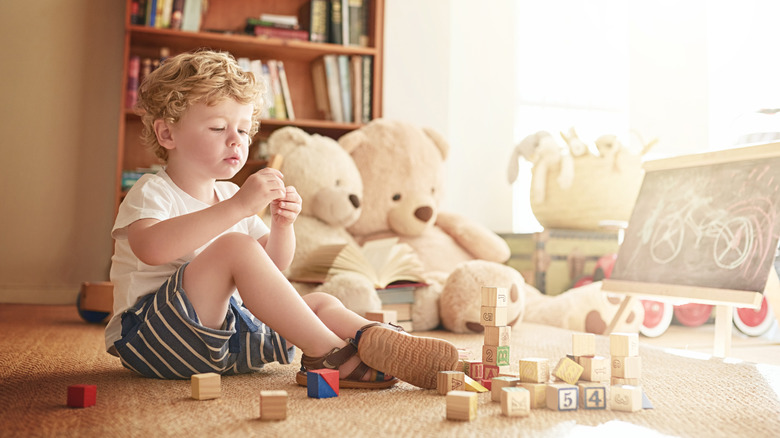It's Not Just The Bed: Tips For Designing A Montessori-Style Bedroom For Your Child
Spend a few minutes looking at some Montessori-inspired children's bedrooms and you might come away with the impression that what you're after is a vaguely Japandi beige monastic cell. It looks, at first glance, as if whatever thought went into the whole concept was done by one person before any of these rooms were started, and now, everybody's just copying everybody else. However, this is (mostly) an illusion produced by applying Montessori principles, and the real work of the room tends to be highly individualized ... though still pretty beige, usually.
Of course, children can't grow and teach themselves in a mildly prettified prison cell of sterile minimalism and bentwood. That work gets done in a controlled environment, to be sure, but part of the trick is giving control to the child, and what space is more a kid's than their own bedroom? There is a tension between the necessity for safe exploration versus the imperative to let kids find their independence. Fortunately, it's a creative tension. And that tension is key to what makes Montessori-style bedrooms so appealing.
How do you make your own, though? Well, the first steps begin once a child graduates to toddlerhood: Before anything else, clear adult furniture from the room. Some Montessori parents advocate for making all furniture in the room movable, so the child can experiment with reorganizing — but any structure that can be climbed on or fall on a child should be anchored to a wall. From there, it's time to truly dive in.
With Montessori bedrooms, it's all about crafting an exploration zone
There are other creative tensions in designing a Montessori-friendly bedroom for a child. One is the tension between peace and exploration, and between simplicity and structure. On one hand, you want a child's bedroom to contain enough material to be interesting and developmentally valuable. Fostering independence requires access to materials — toys, supplies, and all the stuff that makes up the daily life of a young child. To that end, keep decorations and wall art at kid-level, provide only furniture sized for children, and use low shelves for storage. In general, Montessori suggests open shelving, but let your situation guide you. If your child's things would be impossible to organize on open shelves, translucent bins might be in order to show the contents without requiring that things get too mixed together.
If you can, limit items (clothes, toys, books) by rotating them with items stored elsewhere, to keep things simple and manageable. It makes sense to aim for a small number of toys in the bedroom, but necessity can dictate otherwise. It's important to keep toy storage organized, for sure, but strident minimalism isn't useful. Give your child a laundry basket for dirty clothes, and encourage its use. Make the clothes organization scheme easy to understand. Consider not folding clothes stored in drawers, which can be an impediment to a kid's putting clothes away. Remember, the goal is accessibility, not aesthetics. Use bookshelves that face out books' covers rather than their spines (like a magazine display rack), or bins in which books can be easily flipped through.
Don't forget to give your Montessori bedroom a peaceful space (& keep it peaceful)
But you also need to reserve a corner of the room for peace — that is, a spot for sleeping, which doubles as a place where the child can enjoy a quiet and calm moment if they choose to. Use soft, serene colors. This is where the Japandi palette can really show its stuff, in fact: Go with a neutral foundation, accented with hues and materials from the natural world. Use light neutrals (greys and beige) for the wall color, and flooring that can get along with every eventuality.
This backdrop approach also applies to lighting. Use dimmable, warm lighting with as little blue light as you can manage to preserve proper sleep hygiene. In fact, use as little light as you can get away with. Because it's usually a comfort thing rather than a safety thing, some parents advocate for providing a flashlight rather than a night light. Circadian rhythms can be disrupted by traditional night lights.
Minimalism is often a product of simultaneously thinking too much and too little, but in a sleep area, it's probably a good idea to keep distractions to an absolute minimum. That means little or no storage in the zone, perhaps even of books. While it might become an occasional distraction, consider adding a children's audio player like a Toniebox or Yoto Player, which includes a night light that can be dimmed or disabled, and a set of sleep sounds a child can choose from.


